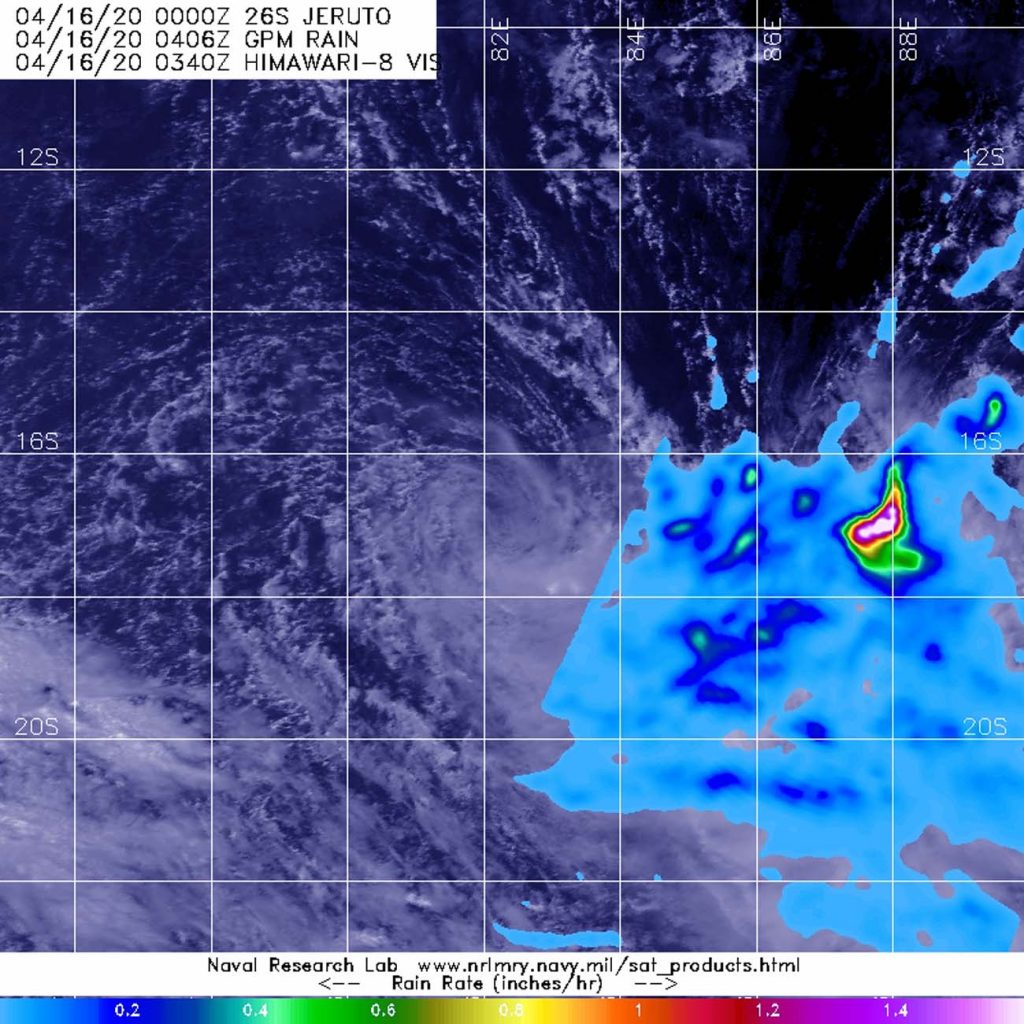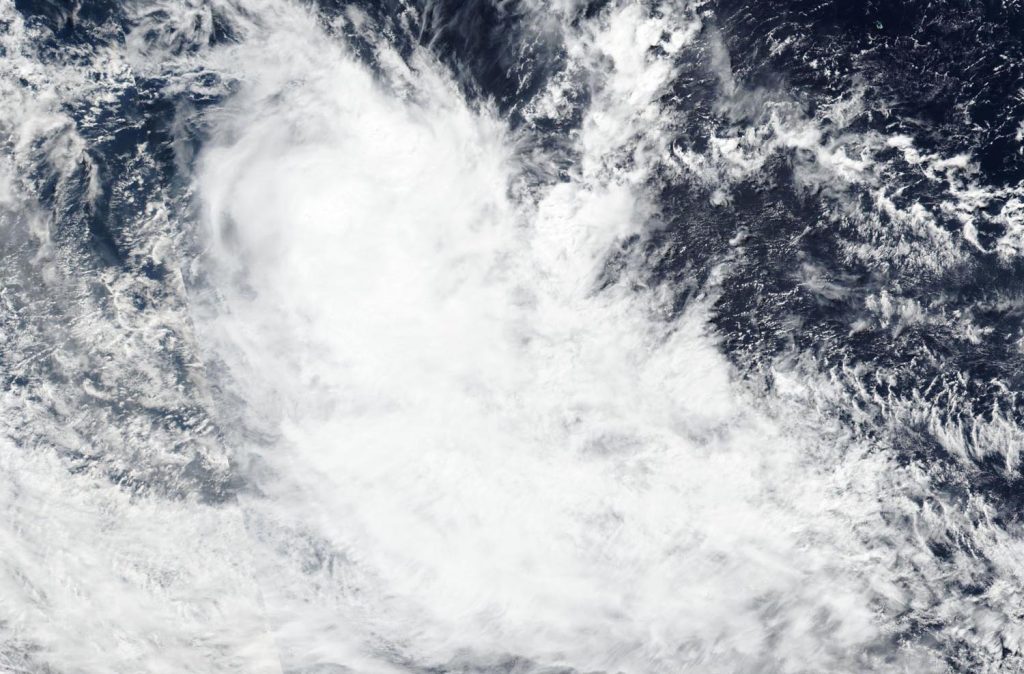Apr. 16, 2020 – NASA Finds Tropical Storm Jeruto’s Displaced Rainfall
NASA analyzed weakening Tropical Storm Jeruto’s rainfall and found one small area of moderate rainfall displaced from the center, because of strong wind shear.

In general, wind shear is a measure of how the speed and direction of winds change with altitude. Outside winds were pushing against the storm and displacing the heaviest rainfall east of the center.
On April 15 at 5 p.m. EDT (2100 UTC), The Joint Typhoon Warning Center noted that Tropical Storm Jeruto was barely holding onto tropical storm status with maximum sustained winds near 35 knots (40 mph/65 kph). Jeruto was located near latitude 16.2 degrees south and longitude 83.1 degrees east, about 828 nautical miles southeast of Diego Garcia.
Seven hours later, NASA gathered data on the precipitation occurring in the weakening storm. NASA has the unique capability of peering under the clouds in storms and measuring the rate in which rain is falling. The Global Precipitation Measurement mission or GPM core passed over Jeruto from its orbit in space and measured rainfall rates in the storm on April 16 at 12:06 a.m. EDT (0406 UTC). Winds pushed the heaviest rainfall east of the center, where it was falling at a rate of 1.6 inches (40 mm) per hour in a small area.
Jeruto is expected to dissipate on April 16.
Tropical cyclones/hurricanes are the most powerful weather events on Earth. NASA’s expertise in space and scientific exploration contributes to essential services provided to the American people by other federal agencies, such as hurricane weather forecasting.
Both the Japan Aerospace Exploration Agency, JAXA and NASA manage GPM.

